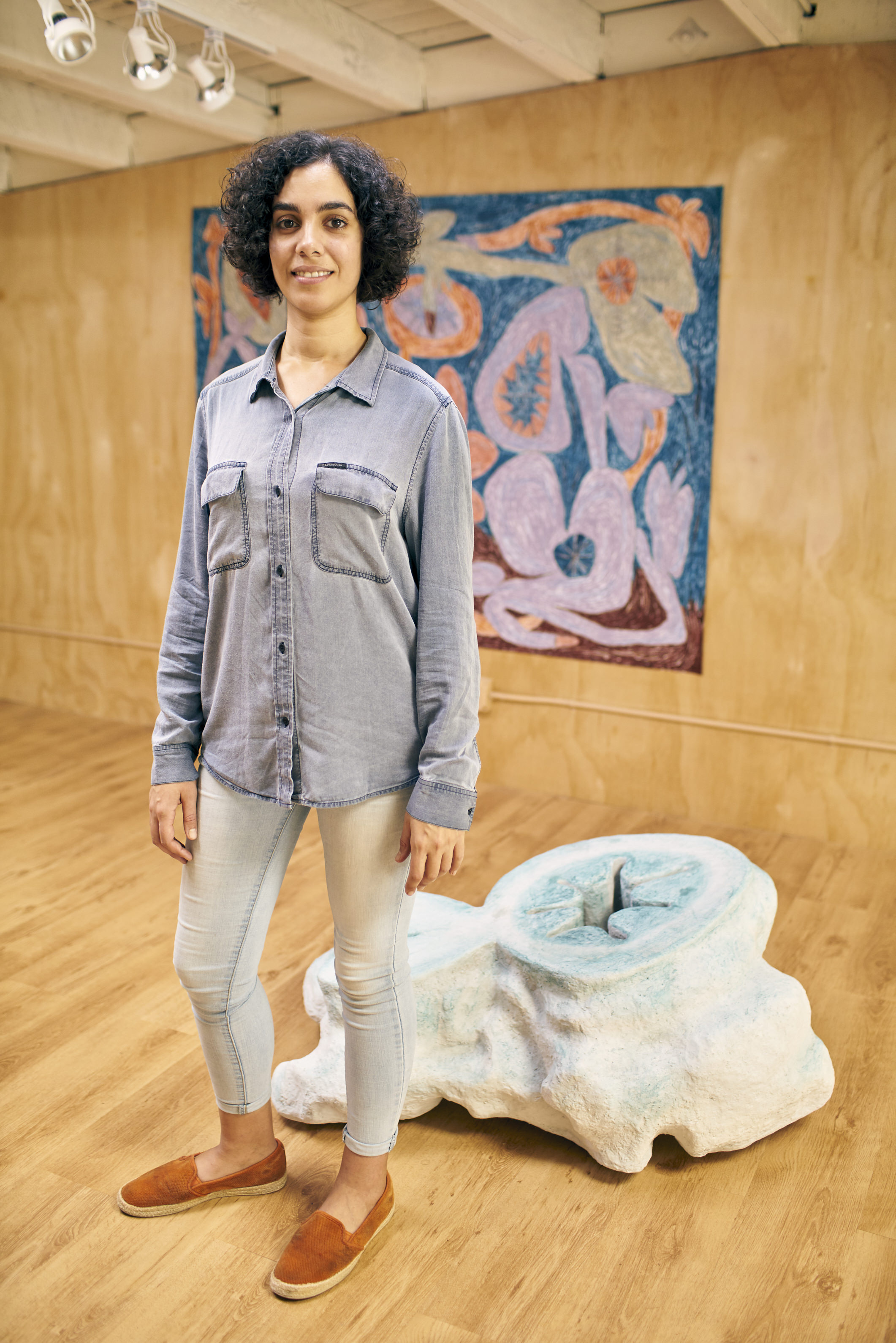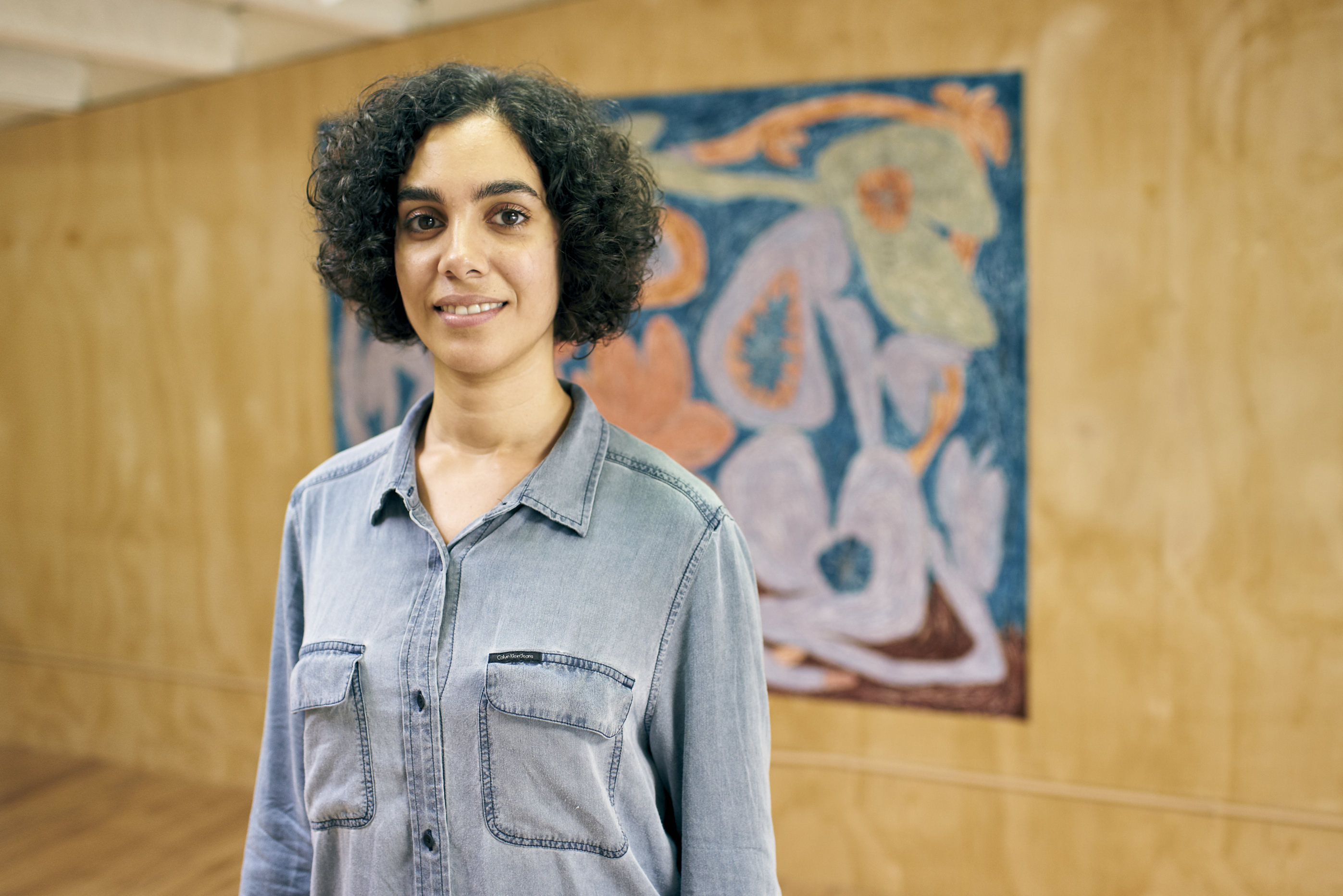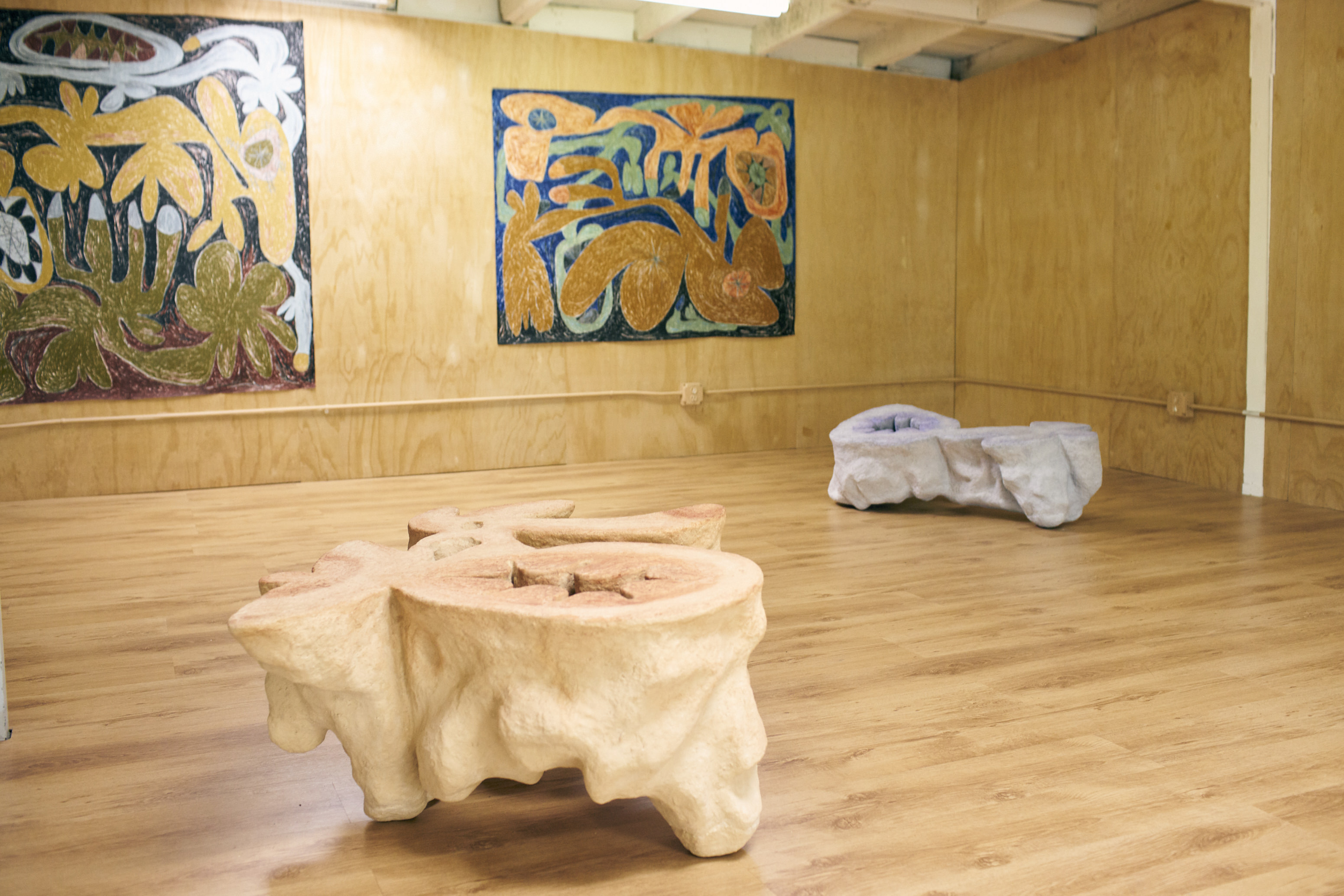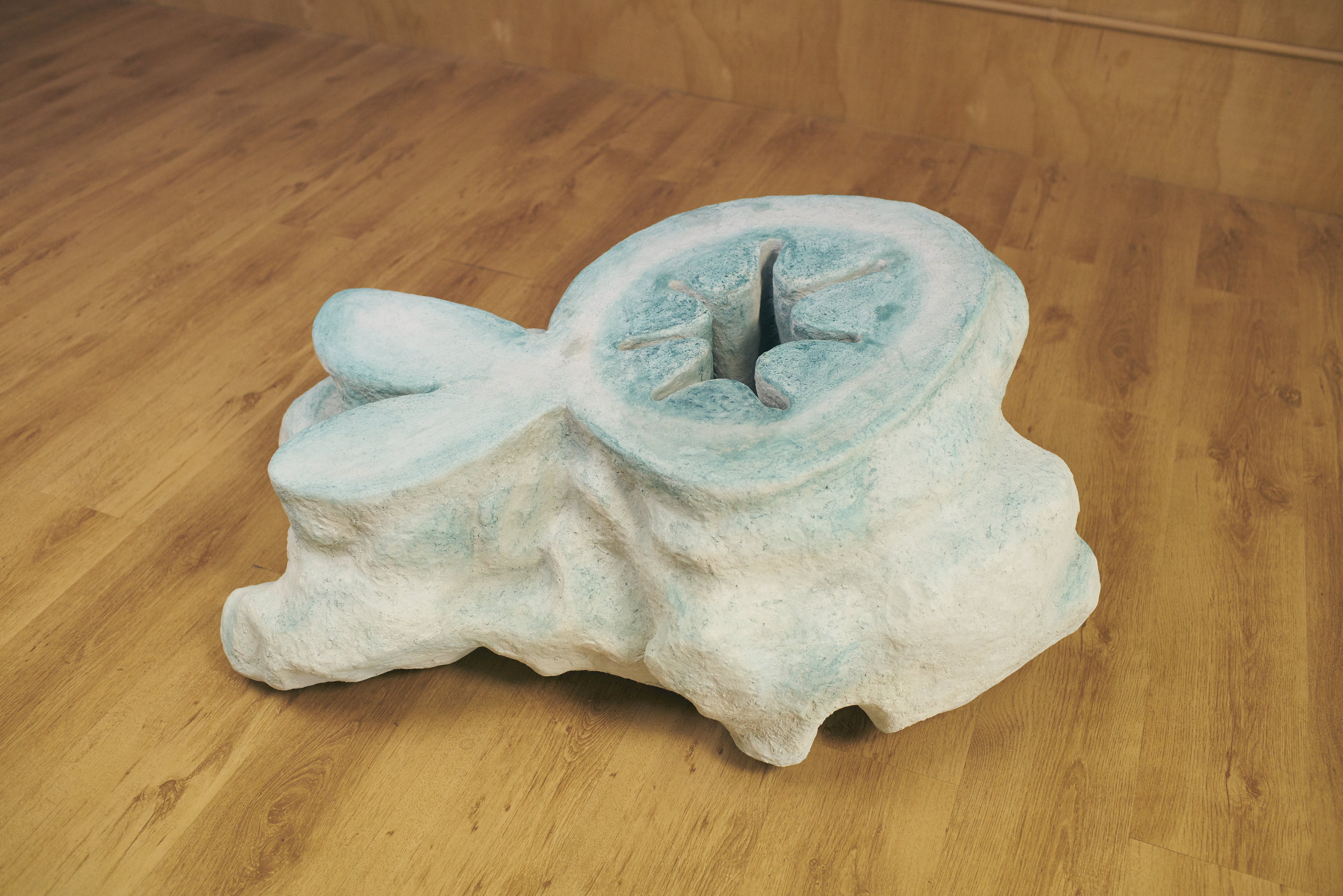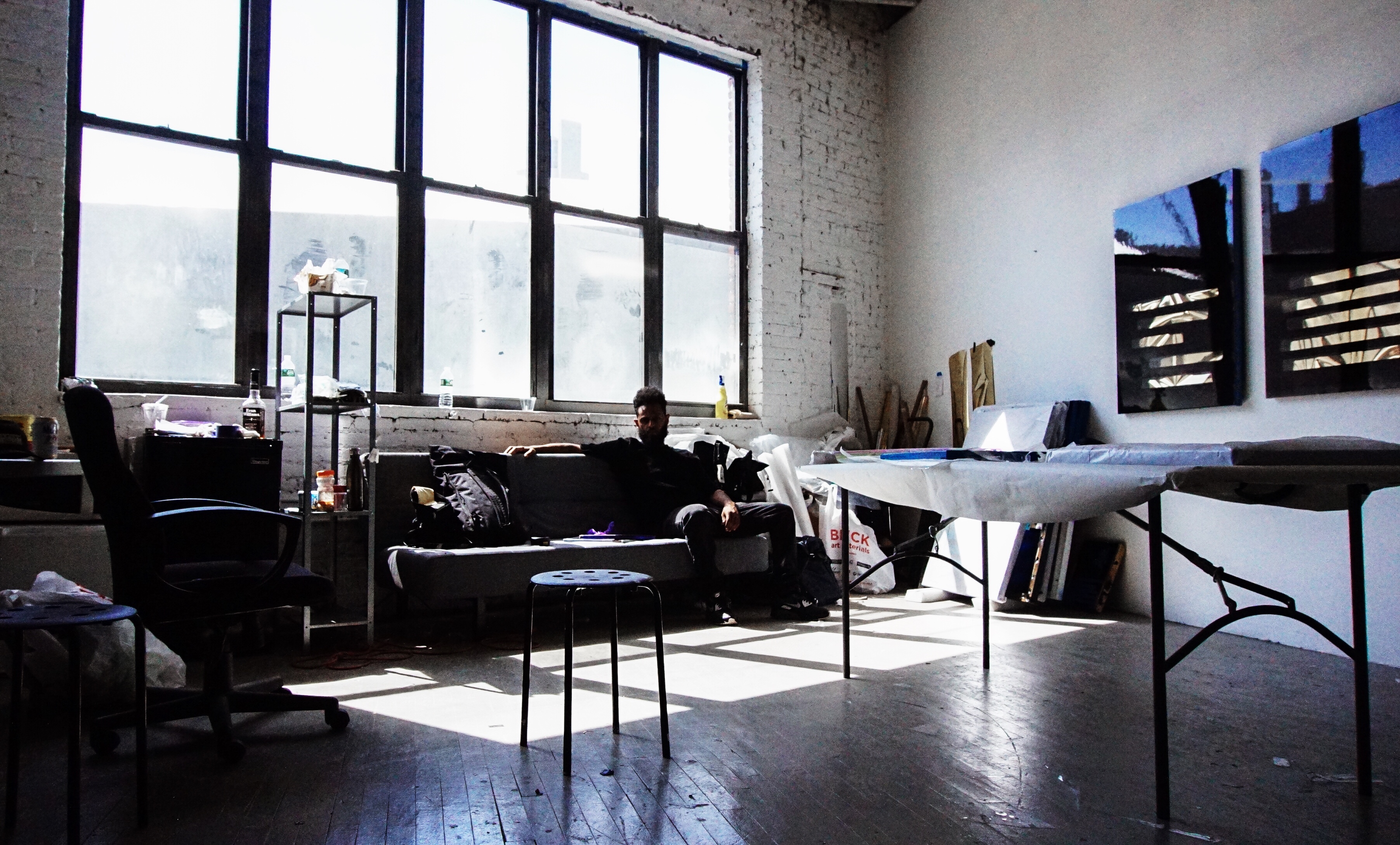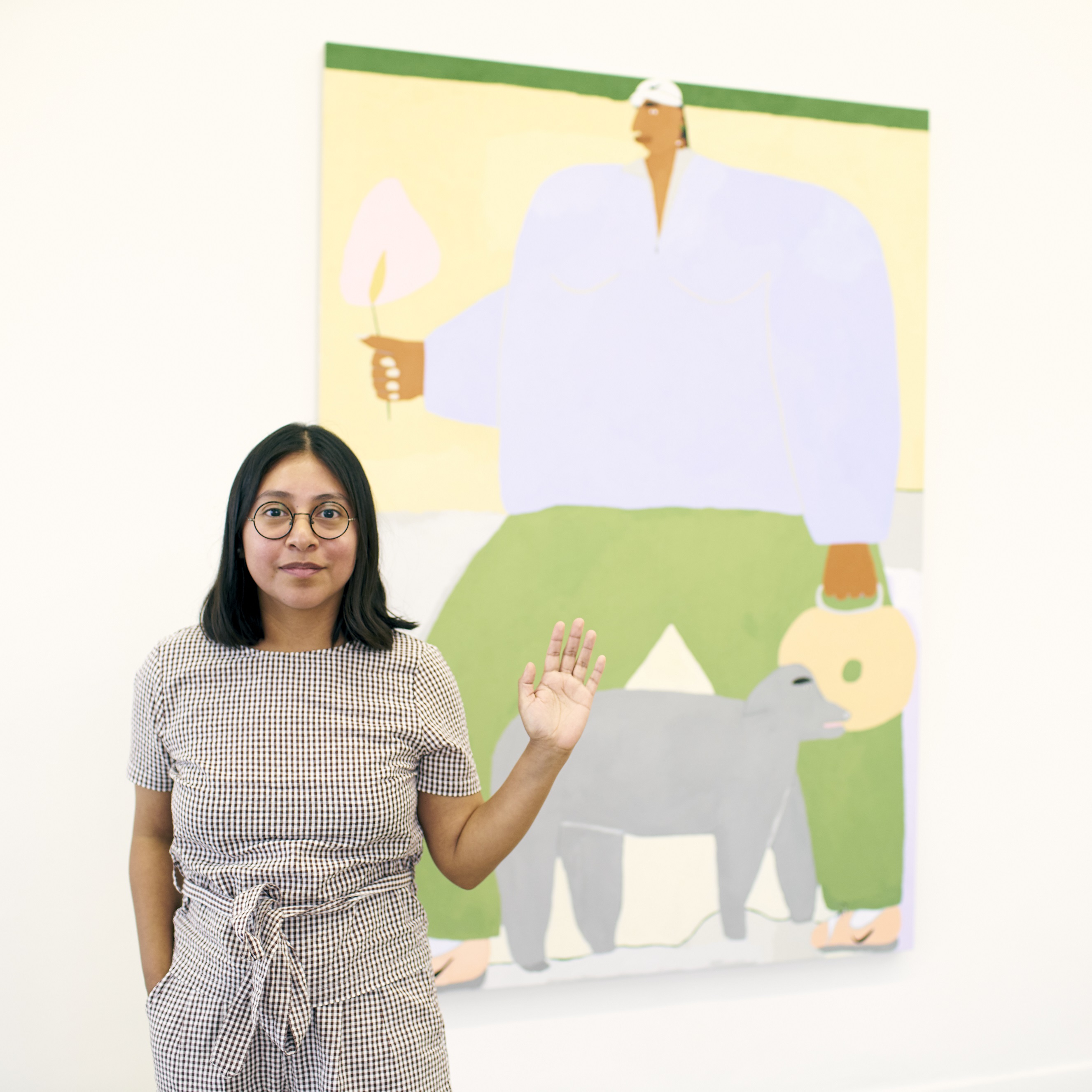Nestled in the small, upstairs gallery of Ochi Projects is “As I Travel,” Iranian American artist Nasim Hantehzadeh’s tribute to memory, belonging, and the transience of being.
“I don’t mean that I literally travel. It’s a metaphor for traveling in time or being in between memories and experiences and being in my head going back and forth,” Hantehzadeh says. “Like the way you read a written history, you can imagine it in your head like you’re traveling in time.”
The walls of the gallery are adorned with three 2-D works composed of oil pastel graphite, pencil, and colored pencil on paper. Titled “When the moon is out,” “In the garden, behind the bushes,” and “Floating on the river,” the pieces depict organic forms that twist and overlap over themselves, evoking images of the human body and genitalia. Scattered on the ground are three 3-D works, which Hantehzadeh hesitates to refer to as sculptures—styrofoam carved with a hot rod knife, then covered with dyed concrete and highlighted with a dry pastel rub. The styrofoam, fragile in diametric opposition to the robust concrete, is a metaphor for softness beneath a hard exterior and the notion that things are not always what they seem. She describes her creative process as “something between drawing and painting,” as she crosses disciplines in her practice and choice of material.
“When I first started drawing these forms, when the forms first appeared, they were geometric and organic,” Hantehzadeh says. “As time passed, they evolved … Most of the forms when they appeared were abstract, sometimes you can recognize them. Most of it is based on the education we got from the system. Based on that education, you can recognize the symbols or semiotics in the works. Each person can imagine it for themselves.”
Rife with references to human genitalia, the works see figures interacting with one another and combining to form non-gendered forms that reference a state of being Hantehzadeh is all too familiar with: occupying a non-binary space between two locations, Iran and the United States. Born in the United States but raised in Iran, Hantehzadeh says she often felt caught between two worlds.
“My whole process is about the conversation between my body, the material, and the environment. That conversation is inspired by this state of being in between in terms of experiences and memories and locations,” Hantehzadeh says. “I don’t feel like I belong to any location necessarily because I was born in the United States, I grew up in Iran, and then I moved back to the United States. Going back and forth detached me from feeling like I belong to these places, it removed the sensibility of calling somewhere home. The situation creates some sort of isolation or alienation and that [feeling] really inspires the work here.”
Paying homage to her Iranian roots, the works in “As I Travel” are inspired by her visits to the war-torn ruins of Persepolis in Iran. The 3-D works in particular, which combine the form of the human body with that of rocks, are a reference to her meditation on the memories and tragedy contained in the debris of the historical buildings. Hantehzadeh said she was reminded of the bodies buried under the rubble and wanted to represent both organic and rocky forms in her works.
“I wanted to refer to a body that is combined with a rock,” she says. “When I walked to that building, through those ruins, in that town, I thought the rocks contained a lot of memories of people from the past who lived there.”
The exhibition also manifests Hantehzadeh’s personal conflicts with the tension she perceives between history and religion on the basis of violence. Although she was raised religious, she said she realized that religion masks a lot of hidden violence once she became removed from the religious community and traveled away from her home.
“As I grew up and traveled and moved to the US, I was able to analyze the system of violence that was hidden in the environment I grew up in. It was so normalized for a lot of people that it was not recognizable, which brings oppression,” Hantehzadeh says. “Being in between two locations allowed me to open up and figure out, based on memories and current experiences, the reasons for the conflicts I felt growing up. When I have the experiences from traveling, I’m able to analyze my memories based on the experiences living in other countries.”
The way she sees it, religion and history both beget violence throughout human history and in all civilizations. As such, she says she cannot trust religion or written history nearly as much as she can her own memories because of their deep-seated roots in violence. Ultimately, Hantehzadeh is realistic about the goals she wants to achieve through art and self-aware of her unique role in the art world.
“I’m not in a position to analyze everything, I’m just making art and seeing where it takes me,” she says.
The “As I Travel” exhibit has passed but you can keep up with Nasim, here: www.nasimhantehzadeh.net
All Photos by Jerome Shaw.



